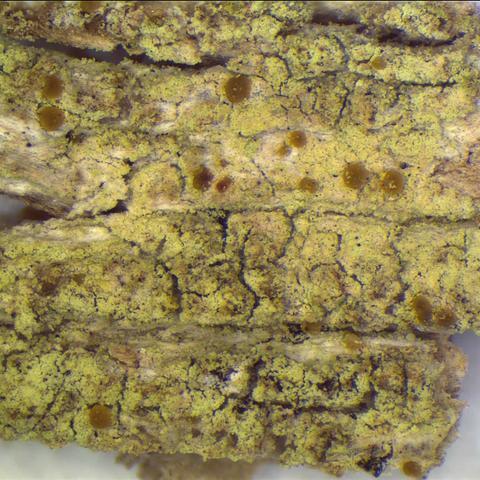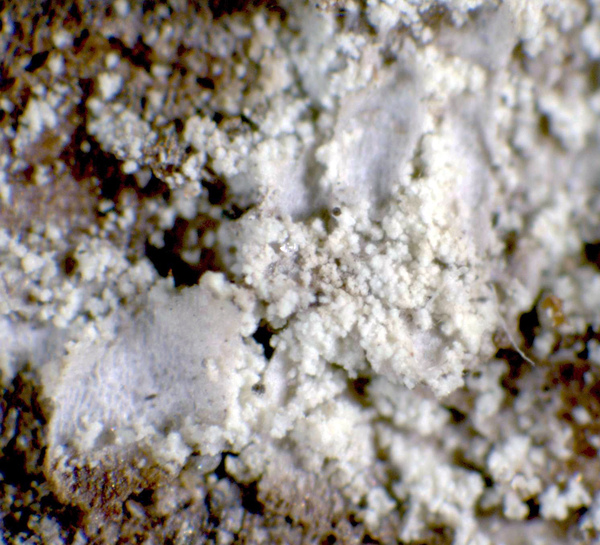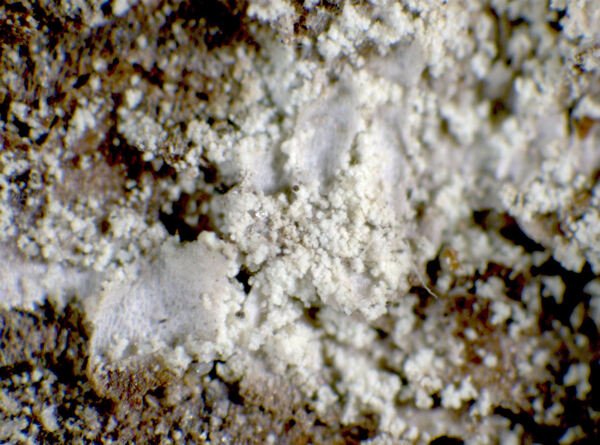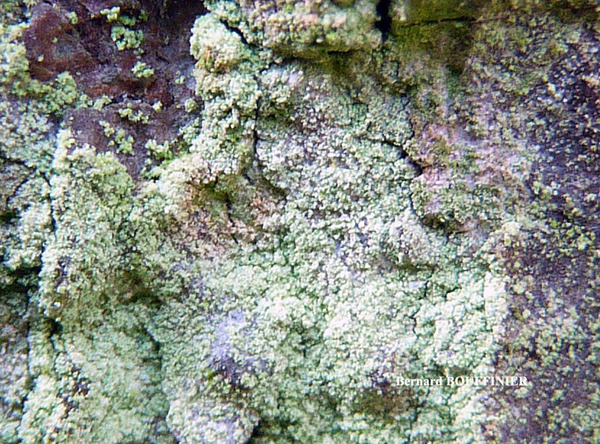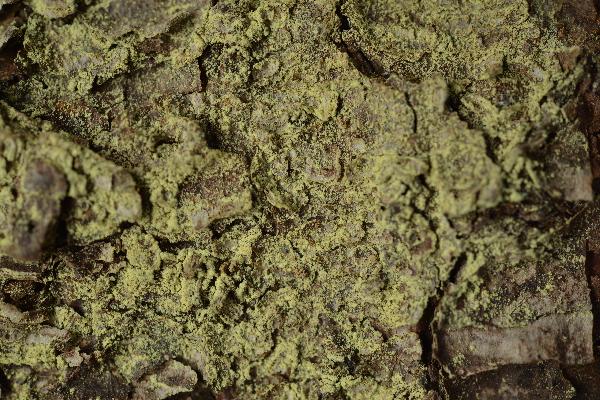Chrysothrix flavovirens Tønsberg
Graphis Scripta, 6: 31, 1994.
Synonyms:
Distribution: C - Sar (Tretiach 1997, Zedda & Sipman 2001).
Description: Thallus crustose-subleprose, episubstratic, thin and continuous to more rarely thick and cracked, dull pale yellow to pale greenish yellow (whitish yellow with age in herbarium), forming extensive patches of 15-25(-30) μm wide, loose (not linked by hyphae), soredia-like granules, sometimes delimited by an inconspicuous, pale prothallus. Apothecia very rare, biatorine, usually few and scattered, 0.3(-0.8) mm across, with a usually flat, rounded, yellow or orange, densely lemon-yellow-pruinose disc and a hardly visible (often masked by the soredia), soon excluded proper margin. Proper exciple poorly developed; epithecium and hymenium interspersed with granules dissolving in K and later recrystallizing; hymenium colourless, 20-38(-45) µm high, I+ blue; pseudoparaphyses branched and anastomosing, intricately interwoven in a gelatinous matrix, the apical cells not swollen; hypothecium colourless, of densely interwoven hyphae. Asci 8-spored, clavate, with a K/I+ blue layer between the two walls which is thicker in the apical part, becoming more diffuse downwardly. Ascospores (0-)1-3-septate, hyaline, ellipsoid to shortly elongate, (8-)10-13(-15) x 2.7-3.5(-4) µm. Photobiont chlorococcoid, the cells sparse and scattered, densely surrounded by hyphae. Spot tests: K-, C-, KC-, P-, UV+ dull to bright orange. Chemistry: diffractaic acid, rhizocarpic acid (major), atranorin (minor), epanorin (trace). Note: a widespread species, also known from Asia and North America, with an apparently mainly subatlantic distribution in Europe, from Norway and Estonia to Spain, growing on rather dry, nutrient-poor bark of mature broad-leaved and coniferous trees, sometimes also on wood. Probably overlooked, being often sterile, but certainly rare in Italy, and restricted to warm-humid areas. Both Italian specimens, from Sardinia, were collected on Juniperus. It is included in the Italian red list of epiphytic lichens as “Endangered” (Nascimbene & al. 2013c).
Growth form: Leprose
Substrata: bark and lignum
Photobiont: green algae other than Trentepohlia
Reproductive strategy: mainly asexual, by soredia, or soredia-like structures (e.g. blastidia)
Most common in areas with a humid-warm climate (e.g. most of Tyrrenian Italy)
Commonnes-rarity: (info)
Alpine belt: absent
Subalpine belt: absent
Oromediterranean belt: absent
Montane belt: extremely rare
Submediterranean belt: absent
Padanian area: absent
Humid submediterranean belt: extremely rare
Humid mediterranean belt: extremely rare
Dry mediterranean belt: absent
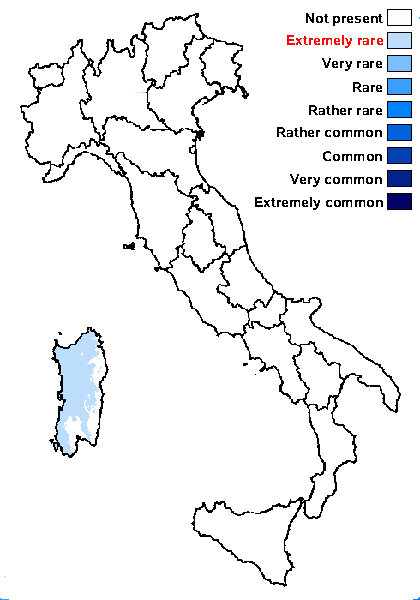
Predictive model
Herbarium samples
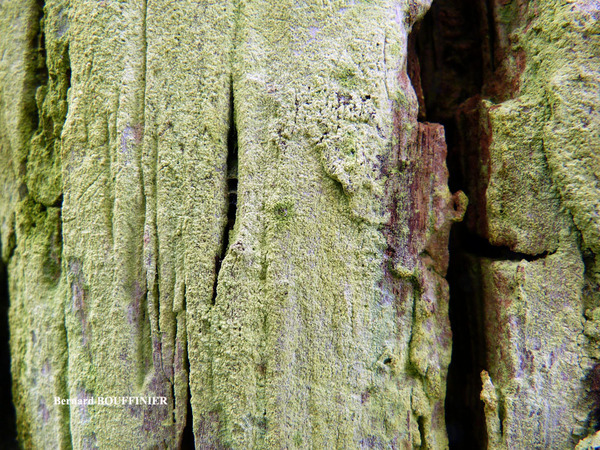
Bernard Bouffinier - Source: http://www.lichensmaritimes.org/index.php?task=fiche&lichen=362&lang=en
France, Morgat
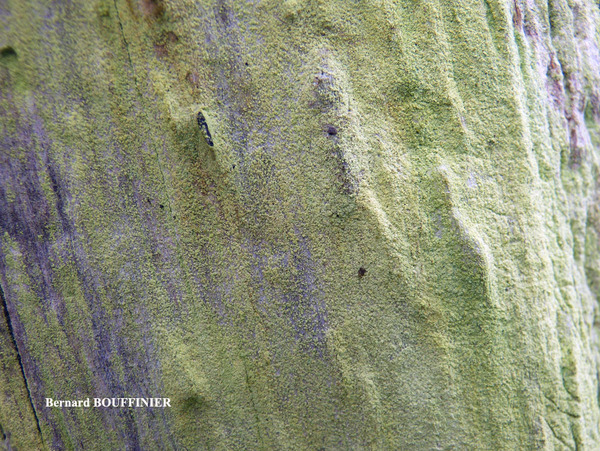
Bernard Bouffinier - Source: http://www.lichensmaritimes.org/index.php?task=fiche&lichen=362&lang=en
France, Morgat

Bernard Bouffinier - Source: http://www.lichensmaritimes.org/index.php?task=fiche&lichen=362&lang=en
France, Morgat
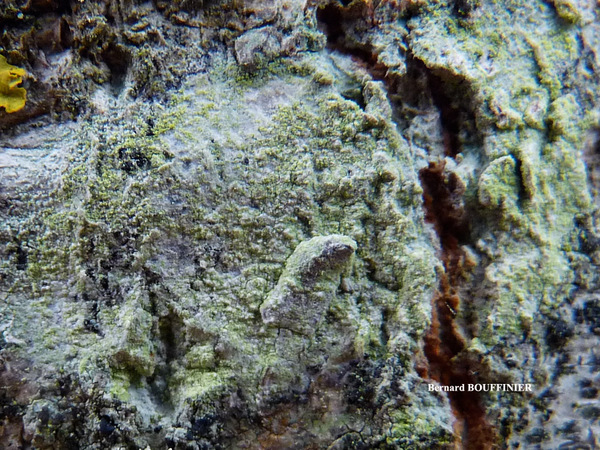
Bernard Bouffinier - Source: http://www.lichensmaritimes.org/index.php?task=fiche&lichen=362&lang=en
France, Pointe du Guern
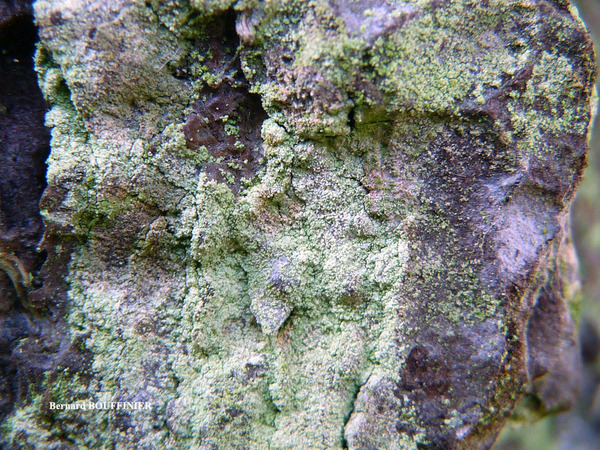
Bernard Bouffinier - Source: http://www.lichensmaritimes.org/index.php?task=fiche&lichen=362&lang=en
France, Pointe du Guern
Growth form: Leprose
Substrata: bark and lignum
Photobiont: green algae other than Trentepohlia
Reproductive strategy: mainly asexual, by soredia, or soredia-like structures (e.g. blastidia)
Most common in areas with a humid-warm climate (e.g. most of Tyrrenian Italy)
Commonnes-rarity: (info)
Alpine belt: absent
Subalpine belt: absent
Oromediterranean belt: absent
Montane belt: extremely rare
Submediterranean belt: absent
Padanian area: absent
Humid submediterranean belt: extremely rare
Humid mediterranean belt: extremely rare
Dry mediterranean belt: absent

Predictive model
| Herbarium samples |

Bernard Bouffinier - Source: http://www.lichensmaritimes.org/index.php?task=fiche&lichen=362&lang=en
France, Morgat

Bernard Bouffinier - Source: http://www.lichensmaritimes.org/index.php?task=fiche&lichen=362&lang=en
France, Morgat

Bernard Bouffinier - Source: http://www.lichensmaritimes.org/index.php?task=fiche&lichen=362&lang=en
France, Morgat

Bernard Bouffinier - Source: http://www.lichensmaritimes.org/index.php?task=fiche&lichen=362&lang=en
France, Pointe du Guern

 INDEX FUNGORUM
INDEX FUNGORUM
 GBIF
GBIF
